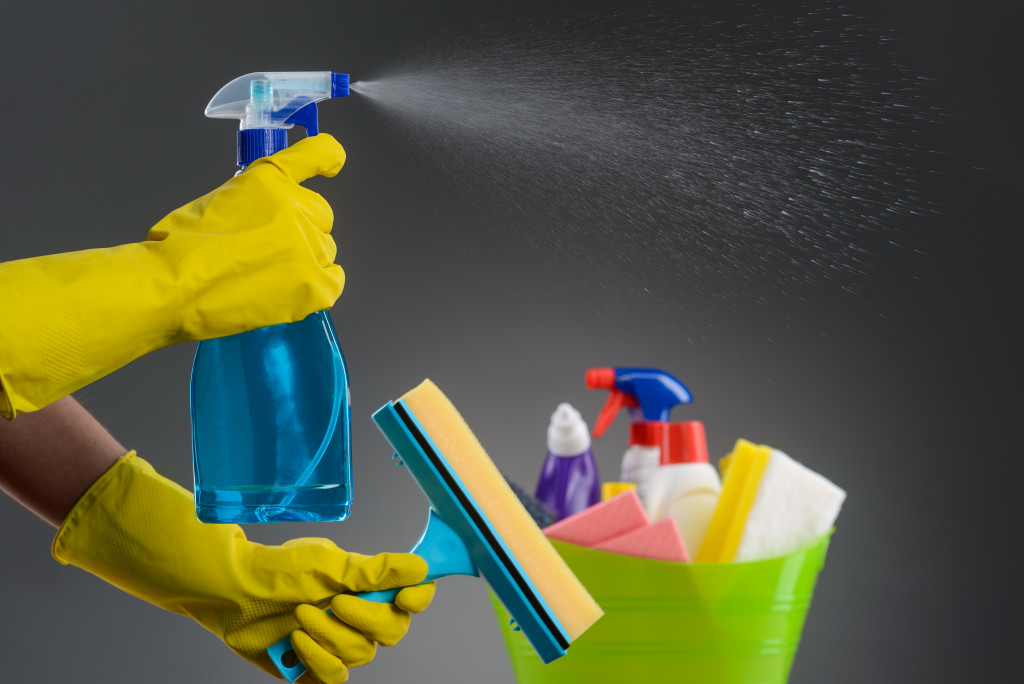Our home will be the place where we spend the most time during the pandemic. This means that it’s likely to get filled by microbes as the days go by. This can be problematic as it can leave your families susceptible to all kinds of diseases.
Sanitizing and cleaning can be tedious tasks, but they’re both essential for a healthy life during this pandemic. So start by cleaning your laundry room.
Laundry Room
The laundry room can be one of the dirtiest parts of your home, simply because many people forget to clean it for years on end. Although it might be the last place to contain the virus due to the lack of visitors, it can have various microbes that can be dangerous to your health.
Your main priorities in the laundry room are your washing machine and dryer. This will always need frequent cleaning, depending on how much you use them. Your washing machine will accumulate bacteria, and in some instances, resilient viruses that exist in the world today. They will continue to accumulate until you give yourself time to clean it.
One of the best ways to clean your washing machine is to start it without any load and fill the container with bleach. You can also run it at the highest temperature to kill any germs inside. When it comes to your dryer, you should always check your dryer vent if you have one. This specific vent accumulates the most dust in your household, so make sure to get it cleaned a couple of times a month.
You should also keep watch for any molds growing in your laundry room. Molds enjoy moist and dark areas, prevalent in most laundry rooms. Therefore, you should clean them off the moment you see them.
Bathroom

Another moist and microbe-ridden room is the bathroom. If you want to keep your bathroom clean, you’re going to need a couple of these tools:
- Squeegee
- Sponges and microfiber cloths
- Toilet brush
- Spray bottles
- Mop
Your bathroom will require daily attention if you want to ensure that it’s microbe and mold-free. First, always mop your floor. If certain areas are unreachable by your drain, such as elevated spots, use the squeegee to pull the water towards the drain. Second, always wipe your faucets and sinks, especially if you have guests in your home. Sinks and faucets have moist surfaces, and they are usually at room temperature, making them an ideal living spot for all sorts of microbes and even the COVID-19 virus.
Once you get your bathroom cleaned, you’re going to need to ensure that it stays clean. Purchase a cabinet to ensure that you have a place to store your bathroom supplies. Consider purchasing toothbrush holders for your family members. This can ensure that no one gets their toothbrushes mixed up. It can also make sure that your toothbrushes are safe from any air microbes that might exist in your bathroom.
A clean bathroom is an organized bathroom. Always make sure that your bathroom stays dry, mainly when someone recently used it.
Living Room
The living room can be the primary vector of infection in your household. Therefore, it can be the most dangerous area in your home, especially if you often have visitors.
Cleaning the living room is not just about cleaning what you can see. You shouldn’t just sweep and clear it every week. Dirt, microbes, and the virus could be hidden in corners and home furniture. It’s even been found that the virus can last on the plastics of our TV remotes for more than two days if left unsanitized.
It’s important that you always wipe down the surfaces of your living room with alcohol and water. This is vital right after you have visitors in your home. Wipe your TV remote or anything they touched during their visit. Also, make sure to clean every nook and cranny to ensure that dust isn’t accumulating in those corners.
Bedroom
Lastly, we have a bedroom. Your bedroom might not have a lot of microbes or viruses, but they can surely gather up dirt and dust if they’re not cleaned regularly.
It’s crucial that you wash the linen of your bedroom in hot water at least once a week. You should also wash your soiled items separately from your bedsheets. If you have a lot of surfaces in your bedroom, you should give them a good wipe down every week. This is to ensure that dust won’t accumulate on these surfaces, which can be problematic when you inhale them during your sleep.
If you want your bedroom to accumulate less dirt and dust, you should decrease the surfaces found in your bedroom. This means reducing your tables and closets. You should also have a dedicated place for your linens and don’t store them inside your bedroom.
Our home can be home to many microbes and even the COVID-19 virus. Ensure that you sanitize and clean whenever you can so that your family and your guests are safe from disease.





